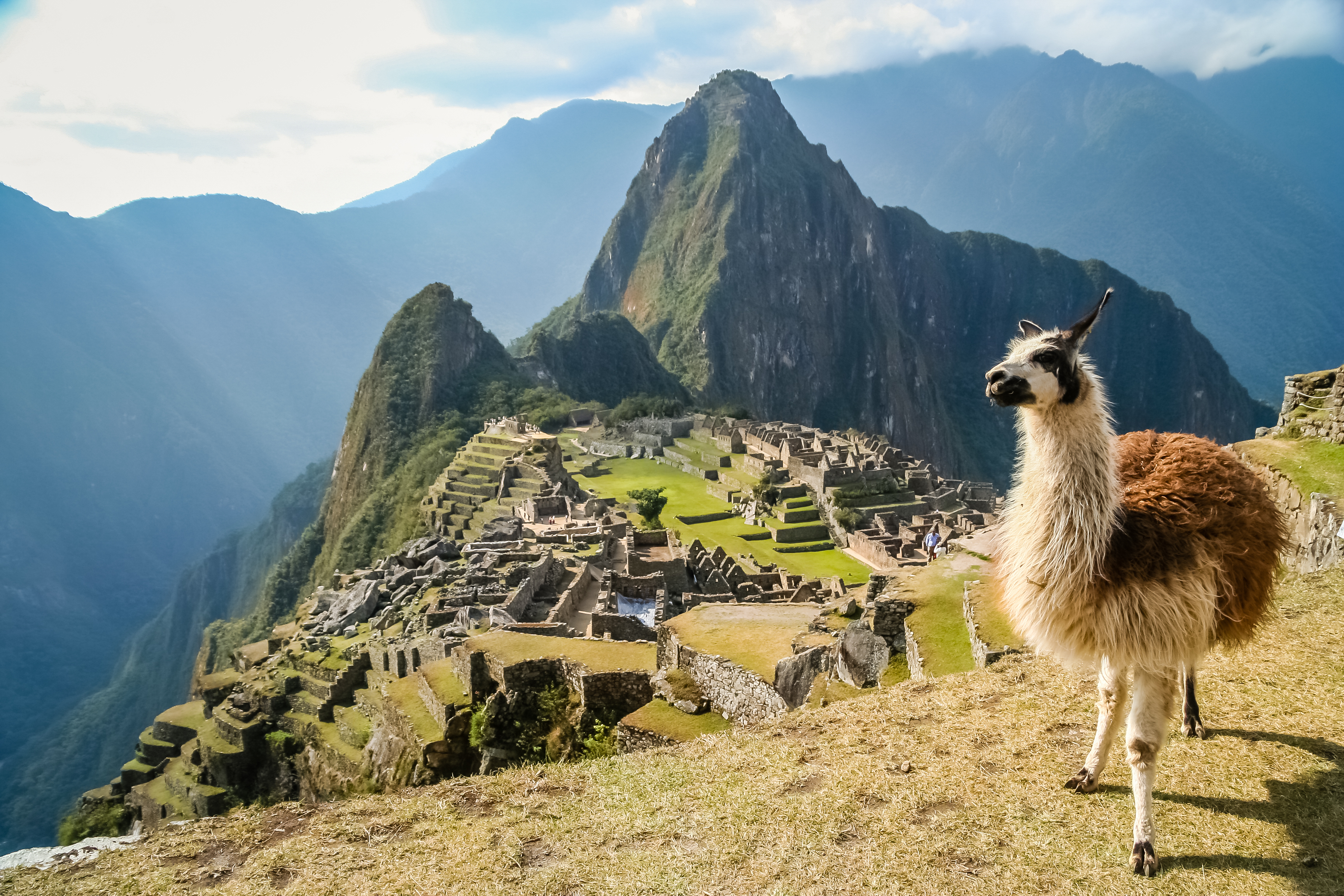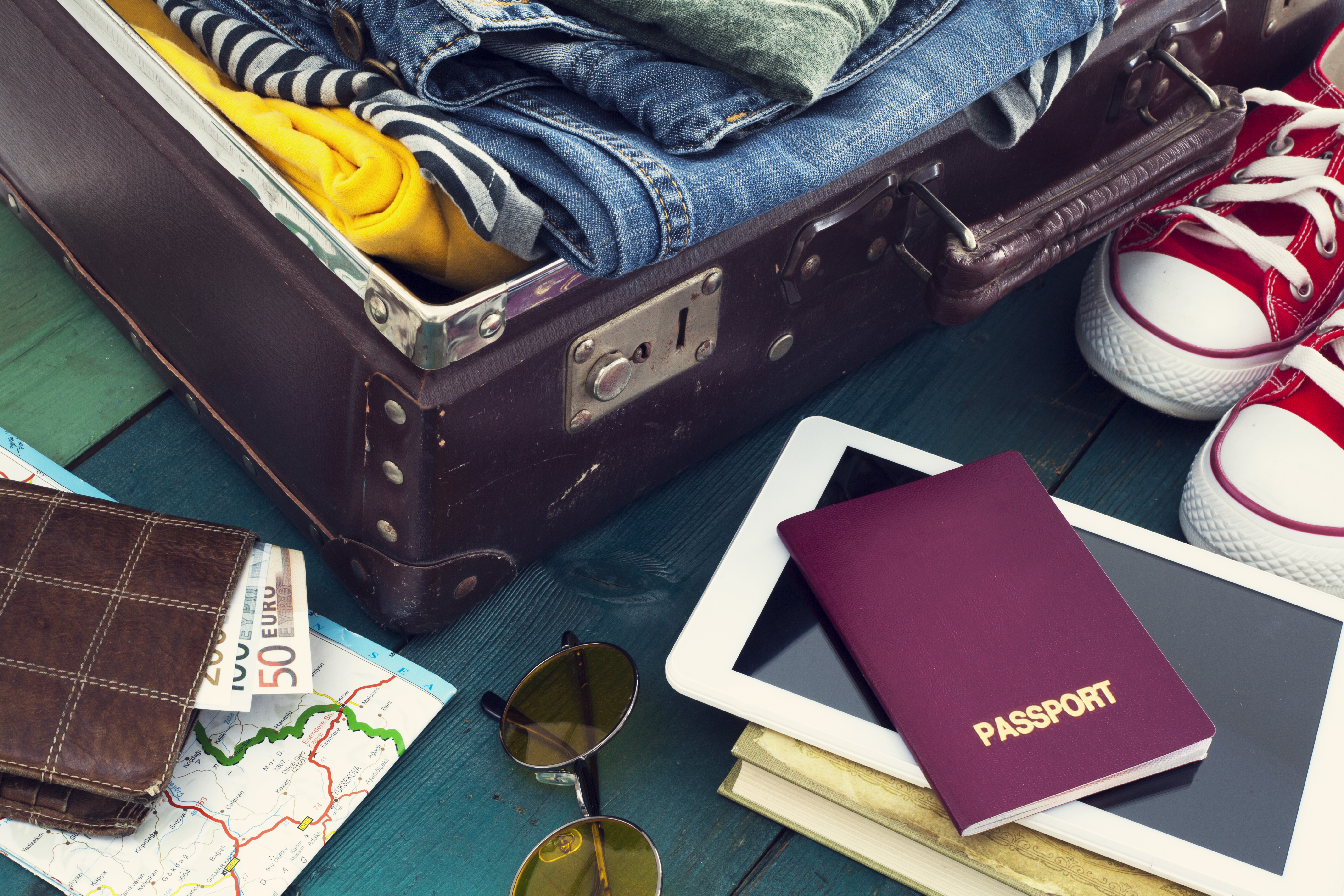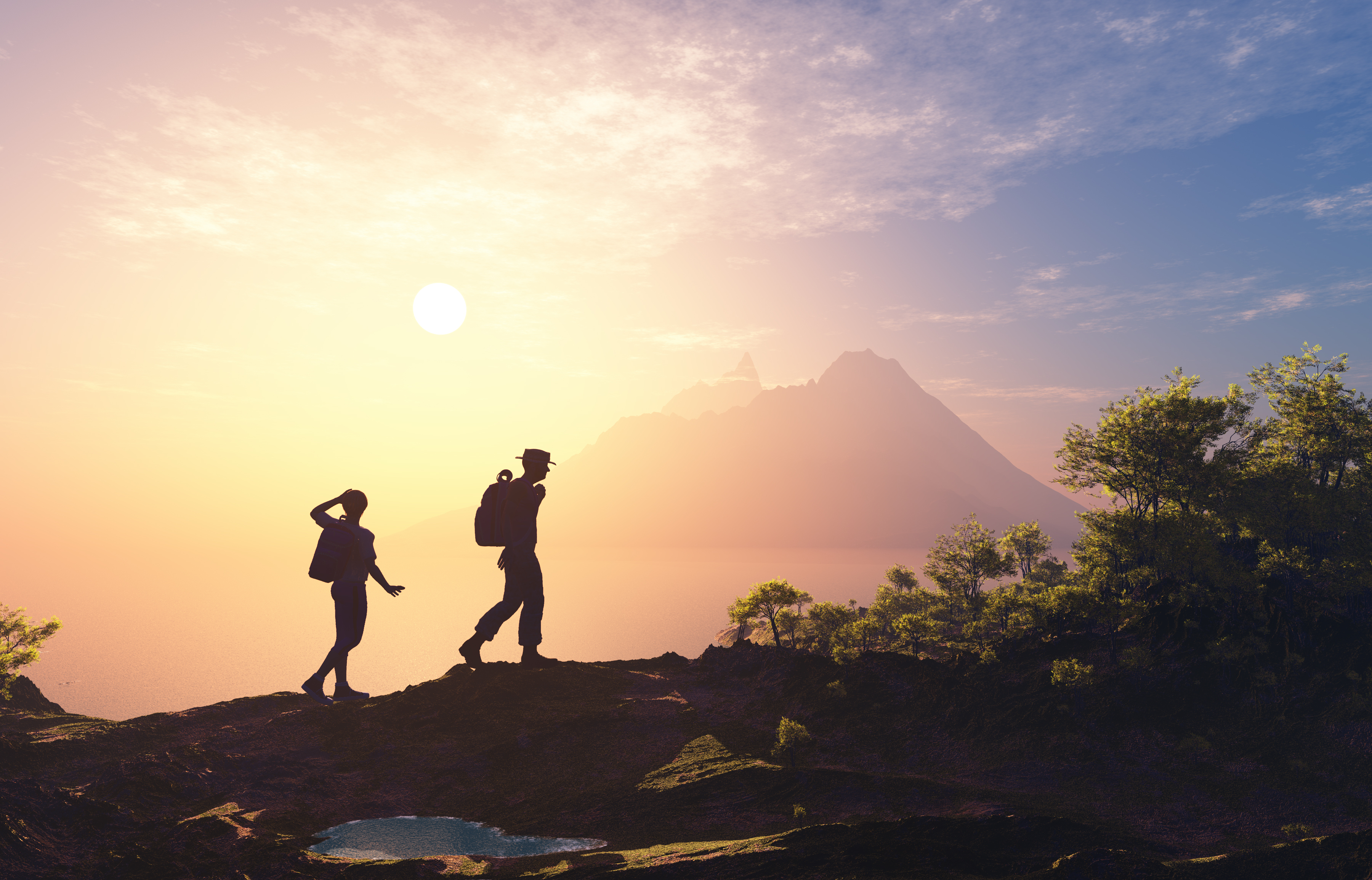From stunning mountain tops, to lush rainforests and deep canyons, combined with a remarkable history, rich culture, and of course Machu Picchu itself—the hard question is, what isn’t calling you to Peru? South America has long been on my list of places to visit with Peru at the top of countries to explore within this vast continent. So needless to say, as soon as the time was right, I purchased my ticket! While travelling to a new country in a continent you’ve never been to causes a great deal of excitement and anticipation, it also leaves you with some unknowns to be discovered. This holds especially true when travelling with food allergies. With that said, I am a firm believer that you should not let your food allergies hold you back from new and exciting experiences! I found that with the right preparation, I was able to accommodate my allergies to wheat, eggs, and peanuts, and not have my allergies hold me back from making the most of my travels to Peru!

Llama in front of ancient inca town of Machu Picchu
When planning any trip/vacation there is always extensive preparations beforehand. From booking your flights, to nailing down your itinerary, and of course packing a strategic suitcase, there is always something to be planned or done. Of course, there is always an extra degree of planning when you have to consider your allergies. Whenever I am picking a country to travel to, I need to look up what their typical cuisine is and assess the likelihood of finding some allergen-friendly food options. I found that when researching common Peruvian dishes, most consisted of grilled meats, potatoes (over 300 varieties…yay!), grilled vegetables, quinoa, and soups. Luckily, most of these work well with my wheat, egg, and peanut-free diet! I also ensure that whenever I am travelling to another country where English is not the primary language spoken, that I bring my allergy cards. These allergy cards are laminated cards that I’ve ordered online which are the size of business cards and state in whatever language I order (in this case Spanish): my allergies, pictures of the specific food allergens, and also feature a specific card that states I need immediate medical attention and need to be taken to a hospital where they speak English. I’ve used these cards in the past in Tanzania, Nepal, and throughout Europe and have had very positive results. I also like to always have Google Translate on my phone, as another means of translation if needed.
When it comes to planning my itinerary, I again take some extra considerations. For this particular trip to Peru, the first part of my trip that I planned was a four-day trek. When researching trekking companies, I considered their ability to accommodate dietary restrictions. The company I decided on was one that actually asked clients to list their dietary restrictions on their initial intake form. After further communication with this company they assured me that they regularly accommodated food allergies and would be able to provide meals during the trek that would be allergen-safe. Since this trek was only four days out of my two weeks of travelling, when I was planning what other cities and sites I would be visiting, I also looked up what health services were closest and the presence of any English-speaking hospitals. I kept a log of the name and locations of these hospitals and health services hoping not to ever actually need them, but knowing just in case!

Finally, when it came to packing for my trip, along with trying to strategically fit enough clothes and supplies for two weeks in one hikers backpack I also ensured I packed allergy-friendly snacks for what I thought might last the better part of two weeks as well as multiples of my auto-injector as well as anti-histamine pills.
After months of lead up, the day of my trip finally arrived! After two long plane rides I arrived safe and sound in the city of Cusco— a city in southeastern Peru. This is the city you are likely to visit if you are trekking to or planning to visit Machu Picchu. Due to the popularity of Machu Picchu, Cusco is a city that is very traveller-friendly. I spent two and a half days in Cusco as I acclimatized to the high altitudes. During my stay, I found I was able to eat out with relative ease with waiter or waitresses either able to speak English or by using my allergy cards. One of my favourite restaurants had to be a place that specialized in vegetarian/vegan dishes and used only organic ingredients grown in the sacred valley (and believe it or not, this was also probably one of my cheapest meals eating out!!).
After the two and a half days spent in Cusco it was time for some trekking! The trail that I hiked is known as the Salkantay trail and is a 64 km hike over three days that leads you to the base of Machu Picchu, where on the fourth day you actually spend the entire day visiting Machu Picchu. The trek was everything I could have wanted and more. The days were tough first hiking up through the Andean Mountains until finally reaching the Salkantay Pass and then hiking down into the forested valleys below. Every type of weather and degree of temperature seemed to be experienced and every form of clothing worn. The scenery and dramatic landscapes were absolutely spectacular and humbling at the same time, not to mention made every blister and worn out muscle worth it. Food wise, I always had food options I could eat on my trip. While the trekking company provided breakfast, lunch, and dinner, which I was able to eat, they also provided trekkers with a snack— which I found more often than not I could not eat. I definitely under-estimated how many granola bars I would go through while hiking 20+ km a day. One near miss at the end of my trip came after my trek was finished and when I was out for dinner and drinks with my fellow trekkers. Arguably the most popular alcoholic drink in Peru is known as a “Pisco Sour,” a cocktail consisting of pisco (brandy commonly found in Peru and Chile), lemon juice, and bitters all shaken together with a creamy froth added on top. It wasn’t until I had my glass and was about to take my first sip when a friend of mine listed the ingredients of this drink again and added that meringue was the finishing feature on top of the drink. This of course meant that the white froth I was about to slurp up was just beaten egg whites and would have lead to a less ideal end to my trek. So, instead of this drink, one of my fellow trekkers got an extra drink and I got to try the pisco sour minus of course any egg whites.

The rest of my travels took me to the Lake Titicaca region of Peru— this lake being the highest navigable lake in the world. I began my travels in the lakeside city of Puno, I visited islands on the Peruvian side of Lake Titicaca, before following the coast down to Bolivia where I spent several days on the Bolivian side of the lake (I highly recommend giving a visit to the Bolivian side if you ever find yourself visiting Lake Titicaca!) Now being away from the popular traveller city of Cusco, it was definitely a rarity to come across locals who knew English and I either relied on using my allergy cards when eating out or fellow travellers who happened to be able to speak English as well as Spanish. I also was out of my packed snacks not long after my trek was finished. When it came to purchasing allergen-safe snacks, I quickly learned that bananas and avocados not only taste a million times better in South America but stay ripe for days longer and pack well without bruising as easily as they do in Canada. I also ate way more Pringles then I care to admit. With all of that, I am happy to say that I did avoid any allergy incidents at all of the restaurants that I visited and was still able to indulge in some fantastic Peruvian cuisine! For anyone visiting Peru/Bolivia my top food recommendations have to be their Ceviche quinoa soup and for anyone super adventurous perhaps some Alpaca steak!
Anyone with food allergies knows the extra hurdles that come with travelling, but that’s not to say allergies should be a barrier to getting out and exploring the world a little more! Comment below with your favourite travel destinations and what you did to ensure you stayed safe while travelling with allergies!
– Caitlyn P.
Tags: Caitlyn P., communication, Eating out with allergies, Food Language, Holidays, Peru, Travel